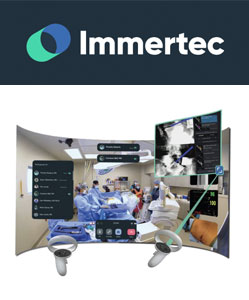Welcome To The Orthopaedic Foundation
A Context for Conversation
Born of the need to promote and encourage research and education in the field of orthopaedics and sports medicine, the Orthopaedic Foundation was established in 2002 with a focus on innovation to better manage osteoarthritis and other musculoskeletal diseases, prevent injury to individuals across the spectrum of activity, and develop minimally invasive treatments with shorter recovery times, with the aim of keeping our world active and pain free. During different stages of our lives, we may not always feel as though our bodies are able to keep up with our spirit. Whether it’s due to injury, illness or the natural progression of age, the active and sometimes adventurous lifestyle we are accustomed to enjoying may be slowed down or even halted. Through education and medical discovery, we are helping everyone passionate about a healthy and active lifestyle…
Stay in the Game…for Life.
The Orthopaedic Foundation was created as a not-for-profit 501(c)(3) organization whose primary function is to effectively promote, support, develop and encourage research and education concerning minimally invasive orthopaedic surgery and advancements in musculoskeletal diseases. The Foundation is additionally committed to initiatives that educate individuals of all ages who are passionate about a healthy and active lifestyle and engage in self directed practices to maintain that lifestyle. The aim of the Foundation is to discover new modalities for the treatment of orthopaedic injuries and musculoskeletal disease, to promote injury prevention, and to explore minimally invasive treatments that guarantee shorter recovery time and faster return to daily activities.
Research Summaries
Eighty percent of patients with anterior cruciate ligament (ACL) tears develop arthritis 5 to 10 years after injury. Partial knee replacement has been traditionally contraindicated in knees with an ACL tear; however, enhancements in technology have made this a procedure for younger, more active individuals. Partial knee replacement is indicated for patients who have arthritis and related pain localized to one compartment, either the inside (medial) or outside (lateral) part of the knee. We compared outcomes after partial knee replacement in patients with and without an ACL-deficient knee using Patient Acceptable Symptom State (PASS). PASS quantifies a patient’s wellbeing by focusing on a patient’s current state and satisfaction with treatment. Two-hundred fifteen knees were included with an average follow-up of 10 years. Partial knee replacement resulted in high patient satisfaction, high survivorship, and a high proportion of patients reaching PASS in both knees with and without ACL-deficiency. With careful patient selection, partial knee replacement is an excellent option to return patients back to activities and sports with excellent long-term outcomes.
Plancher KD, Briggs KK, Brite J, Petterson SC. Patient Acceptable Symptom State (PASS) in Medial and Lateral Unicompartmental Knee Arthroplasty: Does the Status of the ACL Impact Outcomes? J Arthroplasty. 2022 Feb 2:S0883-5403(22)00096-1.

















